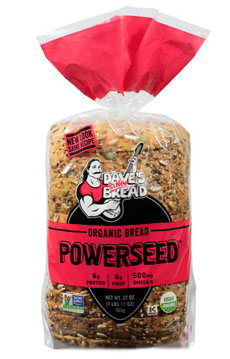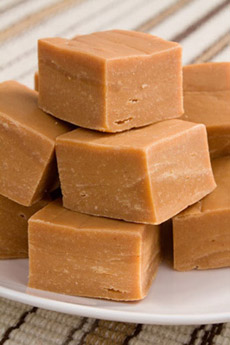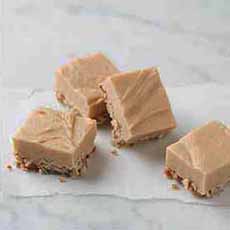|
Milwaukie, Oregon, founded in 1847 on the banks of the Willamette River and now a suburb of Portland, is also known as the the birthplace of the Bing cherry. But soon, it may be known as the birthplace of Dave’s Killer Bread.
Dave’s Killer Bread is “the best bread in the universe,” according to the company website.
While we might add other favorite breads in the tie for “best,” Dave’s Killer Bread is up there. It’s the #1, best-selling organic bread in the U.S.
And it is, indeed, killer: all natural, whole grain breads packed with protein, fiber, omega 3 fatty acids and great flavor. Whole grain bread has never tasted better.
The line of organic, Non-GMO Project Verified, vegan whole grain breads began 10 years ago with Blues Bread (with blue cornmeal). You can tell how much the locals love “DKB”: That original loaf has expanded to 14 different killer breads ranging in flavor and texture, plus dinner rolls and a whole grain cinnamon roll. The line now sold nationwide.
We tried samples of two varieties and are converts. This is the best seeded, whole grain bread we can imagine. We wouldn’t use anything else for sandwiches and toast.
|
|

Photo courtesy Yvonne | TriedAndTasty.com. |
|
|

PowerSeed has 6g protein, 6g fiber and 500 mg omega 3 per slice. And it’s delicious! Photo courtesy Dave’s Killer Bread. |
|
A Cornucopia Of Delicious, Better-For-You Breads
Blues Bread, rolled in organic blue cornmeal, giving it a crunchy crust and sweet flavor. 5g protein, 4g fiber, 340mg omega 3, 130 calories per slice.
Good Seed, with the boldest texture and sweetest flavor of the breads. 6g protein, 4g fiber, 670mg omega 3, 130 calories per slice.
100% Whole Wheat, with a smooth texture and a touch of sweetness (try it as French toast). 4g protein, 3g fiber, 90mg omega 3, 110 calories per slice.
Powerseed, sweetened with organic fruit juices instead of sugar, 6g protein, 6g fiber, 500 mg omega 3, 110 calories per slice.
Rockin’ Rye, with a seedless crust and soft texture. 6g protein, 4g fiber, 130mg omega 3, 120 calories per slice.
Seeded Honey Wheat, with nearly 4 tablespoons of pure organic honey packed into each loaf, the sweet taste and crunchy texture make Seeded Honey Wheat an instant favorite. 5g protein, 5g fiber, 100mg omega 3, 110 calories per slice.
Spelt, with a smooth texture and an earthy, nutty flavor. 5g protein, 4g fiber, 410mg omega 3, 130 calories per slice.
Sprouted Wheat, with bold flavor and crunchy texture. 6g protein, 4g fiber, 840mg omega 3, 110 calories per slice.
21 Whole Grains and Seeds, with a hearty texture, subtle sweetness, and a seed-coated crust. 6 protein, 5g fiber, 220mg omega 3, 110 calories per slice.
|
|
It that’s not enough, there are:
Thin Slice Breads, five versions of the most popular loaves, with calories from 60-90 slice (compared to 110-130 for the regular breads).
Buns, dinner rolls and hamburger buns.
Cinnamon Roll, called Sin Dawg, a whole grain, baguette-shape treat.
What’s in those breads? Depending on the loaf, you’ll get:
Whole grains: barley, blue cornmeal, brown rice, buckwheat, cracked rye, cracked whole wheat, Kamut khorasan wheat, millet, quinoa, rolled oats, rye, spelt, sorghum, triticale, whole wheat flour, yellow cornmeal
Seeds: amaranth, black sesame seeds, brown sesame seeds, flaxseeds, poppy seeds, pumpkin seeds, sunflower seeds, unhulled sesame seeds
Bread lovers: Get up, go out and get some! Here’s a store locator.
Or, order online.
Thanks, Dave, for each delicious bite.
|
|









